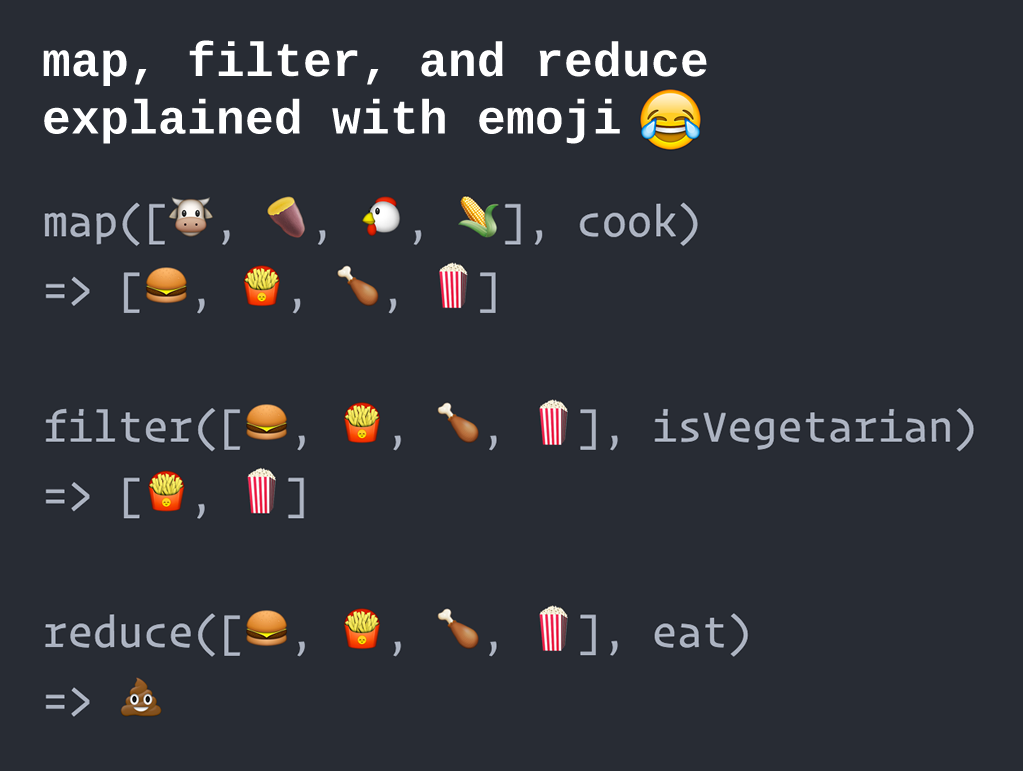Threads, Concurrency, and Synchronization
Fixing Non-Reentrant Code
Splitting the Work up
Teaching Threads
Learning Objectives
- Using pthreads to speed up code
- Common patterns in multithreaded programs
So what is reduce?

What does it look like in code?
Example
// This is fold right
int sequential_reduce(int (*function)(char, char), int* arr,
size_t size){
char initial = arr[0];
int offset;
for(offset = 1; offset < size; ++offset){
initial = function(initial, arr[offset]);
}
return initial;
}
int main(){
char arr[] = {1, 2, 3, 4, 5, 6};
int sum = sequential_reduce(add, arr,
sizeof(arr)/sizeof(arr[0]));
// Whatever you want
return 0;
}
Pthreads? What are thooooose?
Pthreads are short for POSIX-threads. They are a standardized way of doing multithreading on POSIX-compliant systems. A thread is short for thread of execution, meaning that the thread and execute instructions independently of other threads. You covered a lot in lecture here is a bit more in depth
Signature
int pthread_create(pthread_t *thread,
const pthread_attr_t *attr,
void *(*start_routine) (void *),
void *arg);
-
threadsomwhere to write the id of the thread -
attroptions that you set during pthread, for the most part you don’t need to worry about it -
start_routinewhere to start your pthread -
argthe arguments to give to each pthread
Join Me!
int pthread_join(pthread_t thread, void **retval);
-
threadthe value of the thread *not a pointer to it -
retvalwhere should I put the resulting value
Just like waitpid, you want to join all your terminated threads. There is no analog of waitpid(-1, …) because if you need that ‘you probably need to rethink your application design.’ - man page.
All parallel code
#include <pthread.h>
void* do_massive_work(void* payload){
/* Doing massive work */
return NULL;
}
int main(){
pthread_t threads[10];
for(int i = 0; i < 10; ++i){
pthread_create(threads+i, NULL, do_massive_work, NULL);
}
for(int i = 0; i < 10; ++i){
pthread_join(threads[i], NULL);
}
return 0;
}
Some advanced stuff

You can guess what happens in pthread_kill This may be a bit advanced, but the general gist is that they let you leverage parallelism
Putting it all together
We want you to start a thread for each of the elements, do the computation and alter the array. Dividing up the work it should look something like the following

Wait a minute don’t we need mutexes and stuff?
You have been going through mutexes and other synchronization primitives in lecture, but the most efficient data structure uses no synchronization. This means that so long as no other thread touches the exact samepiece of memory that another thread is touching – there is no race condition. We are then using threads to their full potential of parallelism.